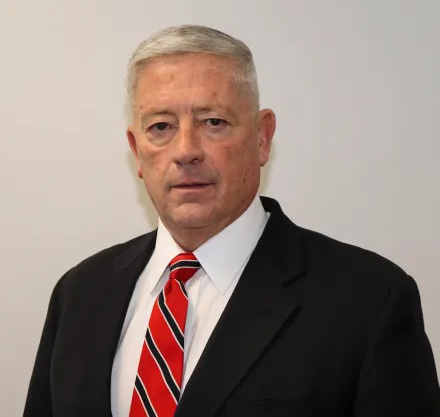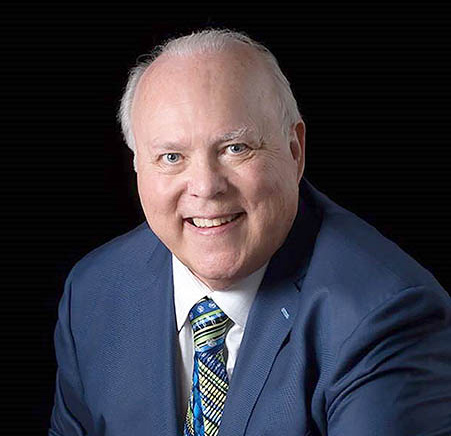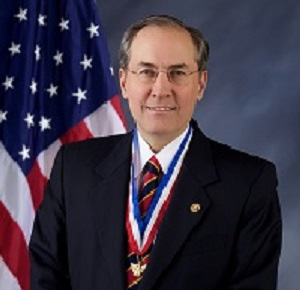Policy Regarding Prohibited and Unauthorized Activities
Scouting America’s Charter and Bylaws, Rules and Regulations, policies, and program guidelines help provide a safe and consistent program. Council and unit charters as well as individual registration are conditioned upon adherence to those requirements.
Adult volunteer leaders and units that allow youth or units to engage in prohibited or unauthorized activities in contravention of program requirements, and leaders who fail to take steps to stop any such activities, put youth and the organization at risk.
Only leaders possessing the educational, emotional, and moral qualities necessary for leadership are permitted to register and serve as Scouters. Actions which put youth or the organization at risk call into question the suitability of a Scouter for leadership.
If it is determined that youth were allowed to participate or engage in unauthorized or prohibited activities, a leader’s registration and/or the unit’s charter may be subject to adverse action, including revocation.
Approved by the National Executive Committee, February 13, 2018
Prohibited Activities
The Scouting program incorporates common activities such as swimming, climbing, cycling, archery, and snowboarding that, depending on the details, may include both real and perceived risks to participants. Those risks are managed by Scouting America policies, procedures, and guidelines that set limits and incorporate specific features such as safety equipment or qualified supervision. Guidance is provided by, but not limited to, the Age-Appropriate Guidelines for Scouting Activities, Safe Swim Defense, Safety Afloat, Climb on Safely, Belay On, and Scouting America’s shooting sports program. Activity components outside of Scouting America program guidelines are prohibited as follows:
- Nonadherence to the Scouter Code of Conduct
- Any activity that is not aligned with the current Age-Appropriate Guidelines for Scouting Activities
- Aquatic activities that fail to comply with Safe Swim Defense and/or Safety Afloat
- Activities related to COPE or climbing that fail to comply with Climb on Safely and/or Belay On. This includes activities on courses that are not constructed to comply with standards set by the Association for Challenge Course Technology (ACCT) and/or are not inspected annually for integrity.
- Flying—use of hang gliders, ultralights, experimental aircraft, or nontethered hot-air balloons, or flying in an aircraft as part of a search-and-rescue mission (exceptions: transportation to Scouting events by commercial airlines; flying or tethered hot-air balloon flights following completion of the Flying Plan Checklist)
- Motorized vehicles used as program or activities—including all-terrain vehicles (ATVs), off-road vehicles, motorized personal watercraft (PWC), snowmobiles, E-Bikes and motorized speed events (exceptions: council-approved ATV and PWC programs that comply with National Camp Accreditation Program [NCAP] standards; go-karting conducted at a commercial facility that provides equipment and supervision of cart operation; youth completing the Motorboating merit badge)
- Shooting or throwing sports outside of Scouting America program literature and guidance. Examples of prohibited activities (with exceptions in italics) include:
- Anvil shooting, flintlocks, exploding targets, and devices regulated by the National Firearms Act
- Blow guns, boomerangs, and ballistae
- Homemade firearms and air cannons, potato cannons, and tennis ball cannons
- Throwing of shovels, torpedoes, spikes, stars, shotput, logs, hammers, and cabers
- Inappropriate ammunition such as pumpkins, hard slingshot ammo, and tracers
- Cannons
- Crossbows (except at the Summit Bechtel Family National Scout Reserve)
- Reloading ammunition, and using reloaded ammunition (except at Philmont Scout Ranch)
- Spears, including atlatls, pole spears, and spear guns (except at Philmont Scout Ranch)
- Open or concealed carry or use of firearms at any Scouting activity, with the following exceptions:
- Law enforcement officers who are required to carry firearms within their jurisdiction
- Use as part of an official Range and Target activity
Some activities considered by youth and leaders are not compatible with the Scouting program. Some have unacceptable risks that have been confirmed by serious or even fatal consequences. Others are not compatible with the Scout Oath and Scout Law. The activities listed below are strictly prohibited as part of any Scouting program.
The list is not comprehensive, but it serves as a definitive list of prohibited activities and it offers a broad sense of what is not allowed as a Scouting activity. Scouting leaders should refer to this list when deciding on activities, and they should reflect vigorously on how any activity outside our published program would resonate with the Scout Oath and Scout Law.
Scouting America prohibits the following activities (with exceptions in italics):
- Extreme or action sports and associated activities that involve an unusually high degree of risk and often involve speed, height, a high level of exertion, and specialized gear or equipment. These activities include but are not limited to:
- Parkour
- Cliff diving or jumping
- Whitewater paddling on rapids rated Class V or above
- Tree climbing
- Free or solo climbing
- Aerobatics while snowboarding, skiing, wakeboarding, or mountain biking
- Parachuting, BASE jumping, or wingsuiting
- Parasailing or any activity in which a person is carried aloft by a parachute, parasail, kite, flying tube, or other device
- Participation in amateur or professional rodeo events, council or district sponsorship of rodeos, and use of mechanized bulls or similar devices (This restriction does not apply to bicycle safety rodeos.)
- Jumping with bungee-cord devices (sometimes called shock-cord jumping)
- Bubbleball, Knockerball®, zorbing, Battle Balls™, bubble soccer, bubble football, and similar orb activities where participants collide or roll around on land or water
- Flyboarding/jet-boarding
- Highlining
- XPOGO
- Trampolines and trampoline parks (exception: commercial facilities that meet or exceed current ASTM Standard F2970-15)
- Use of accelerants, chemicals, or pyrotechnics to start fires or in ceremonies (exception: solid fire starters designed and manufactured for this purpose)
- Using homemade or modified equipment that fails to comply with Scouting America’s Chemical Fuels and Equipment policy
- Burning any solid, liquid, gel, or gas fuel in a tent—including tents or teepees that feature or support stoves or fires
- Excavations or entry into fox holes, makeshift caves, tunnels, trenches, or ditches. Includes digging in sand dunes. (exception: snow quinzees and caves — see Okpik, Cold-Weather Camping, No. 34040)
- Activities where participants strike at each other, including martial arts, boxing, combat games, gladiator games, and reenactment activities such as live action role-playing games (LARP) and Society for Creative Anachronism (SCA) activities (exception: tai chi)
- Activities where participants shoot or throw objects at each other, such as rock-throwing, paintball, laser or archery tag, sock fights, or dodgeball
- Service projects that fail to comply with federal, state, or local laws regarding the safety of youth.
- Use of power tools by youth, including chainsaws, log splitters, wood chippers, and power saws or mills (Youth may use age-appropriate tools following tool manufacturers’ guidelines. See also SAFE Tool Use: filestore.scouting.org/filestore/healthsafety/pdf/680-028.pdf)
- Exploration of abandoned mines
- Fireworks, including selling of fireworks (exception: fireworks displays by a certified or licensed fireworks control expert)
- Water chugging, and eating or drinking competitions such as “chubby bunny” or hot dog eating contests
- Hunting
- Intramural, interscholastic, or club sport competitions or activities
Activity Planning and Risk Assessment
No organization, including Scouting America, can anticipate every possible activity that could be conducted as part of a unit, district, or council event. As such, it is neither the intent nor the desire of Scouting America to provide specific guidance on subjects that are not core to the program or part of our literature.
For those activities that support the values of Scouting America, there are several tools available for participants that will help them plan for a fun and safe tour, activity, or event. Good planning and preparedness prior to executing the activity is key to success. This guide is one of those tools. Other such resources are the Program Hazard Analysis, safety checklists, and the PAUSE card.
As you use these tools, reflect on the words of Robert Baden-Powell: Be Prepared … the meaning of the motto is that a Scout must prepare himself by previous thinking out and practicing how to act on any accident or emergency so that he is never taken by surprise.
Program Hazard Analysis
This tool is primarily used for program areas within camp properties, camps or high-adventure bases. It covers specific risks to the program areas. This tool has a defined way of assessing probability and severity of risks. This tool assesses risks initially, as if there are no protective measures in place, then looks at the risks again with protective measures.
Reference: www.scouting.org/filestore/pdf/680-009.pdf
Safety PAUSE
The Safety PAUSE process stresses the importance of a last-minute safety check in the field. By encouraging each youth or adult leader to pause and reflect on the tasks at hand just before beginning, you have an opportunity to take necessary precautions to prevent any present or potential hazards.
Reference: www.scouting.org/filestore/healthsafety/pdf/680-046.pdf
The SAFE Checklist
Scouts and their parents expect all Scouting America activities to be conducted safely. To ensure the safety of participants, Scouting America expects leaders to use the four points of SAFE when delivering the Scouting program.
Reference: www.scouting.org/health-and-safety/safe/
Supervision: Youth are supervised by qualified and trustworthy adults who set the example for safety. Accepting responsibility for the well-being and safety of youth under their care.
- Ensuring that adults are adequately trained, experienced, and skilled to lead the activity, including the ability to prevent and respond to likely problems and potential emergencies.
- Knowing and delivering the program of Scouting America with integrity.
- Using qualified instructors, guides, or safety personnel as needed to provide additional guidance.
- Maintaining engagement with participants during activities to ensure compliance with established rules and procedures.
Assessment: Activities are assessed for risks during planning. Leaders have reviewed applicable program guidance or standards and have verified the activity is not prohibited. Risk avoidance or mitigation is incorporated into the activity.
- Predetermining what guidance and standards are typically applied to the activity, including those specific to Scouting America program.
- Planning for safe travel to and from the activity site.
- Validating the activity is age appropriate for Scouting America program level.
- Determining whether the unit has sufficient training, resources, and experience to meet the identified standards, and if not, modifying the activity accordingly.
- Developing contingency plans for changes in weather and environment and arranging for communication with participants, parents, and emergency services. not be maintained.
Fitness and Skill: Participants’ Annual Health and Medical Records are reviewed, and leaders have confirmed that prerequisite fitness and skill levels exist for participants to take part safely.
- Confirming the activity is right for the age, maturity, and physical abilities of participants.
- Considering as risk factors temporary or chronic health conditions of participants.
- Validating minimum skill requirements identified during planning and ensuring participants stay within the limits of their abilities.
- Providing training to participants with limited skills and assessing their skills before they attempt more advanced skills.
Equipment and environment: Safe and appropriately sized equipment, courses, camps, campsites, trails, or playing fields are used properly. Leaders periodically check gear use and the environment for changing conditions that could affect safety.
- Confirming participants’ clothing is appropriate for expected temperatures, sun exposure, weather events, and terrain.
- Providing equipment that is appropriately sized for participants, is in good repair, and is used properly.
- Ensuring personal and group safety equipment is available, properly fitted, and used consistently and in accordance with training.
- Reviewing the activity area for suitability during planning and immediately before use, and monitoring the area during the activity through supervision.
- Adjusting the activity for changing conditions or ending it if safety cannot be maintained.







